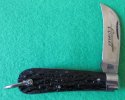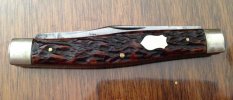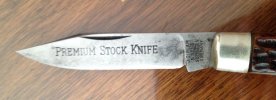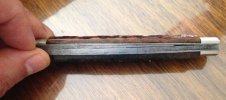- Joined
- Jun 29, 2014
- Messages
- 1,291
Great idea for a thread, Jake - a lot of fun to see all these fascinating and curious knives.
Here are a few less common, wartime variants (not mine) - dating from the Second World War, and produced for British Commonwealth forces, I think.
These two knives are sterile (unmarked), and presumably intended to equip Commandos, and possibly other 'partisan' users with handy tools for sabotage, and other 'behind-the-lines' functions.
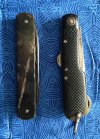
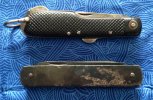
The Parkerised knife with pressed steel handle, has a thick, sturdy punch, that would easily penetrate sheet metal fuel tanks, storage drums, and the like.
The other knife features a strong, hawkbill shaped tyre sidewall cutter, which would also make short work of slashing open soft material quickly, like enemy stores of grain bags, opening gaps in tent walls etc.
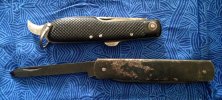
Both main blades are optimised in shape for piercing, as well as their standard cutting function.
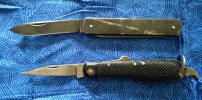
This small Joseph Rodgers knife only offers a piercing function. It's intended to be included with emergency inflatable life rafts, which may need to be swiftly deflated and hidden, on making it to shore.
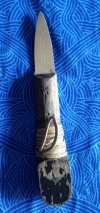
As a sidenote to these knives, here is a page from my grandfathers WW2 field notebook - he was a combat engineer in the 2nd AIF (Australian Imperial Forces), in the South Pacific theatre - which identifies eleven priority targets for 'Demolitions in Raids' - Petrol/Gasoline dumps and water supplies are number one and two on the list.
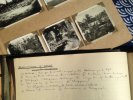
(Interestingly, his notes also identify four non-priority targets, 'unlikely to have serious effect' - roads, culverts, aerodromes and telegraph equipment.)
Here are a few less common, wartime variants (not mine) - dating from the Second World War, and produced for British Commonwealth forces, I think.
These two knives are sterile (unmarked), and presumably intended to equip Commandos, and possibly other 'partisan' users with handy tools for sabotage, and other 'behind-the-lines' functions.


The Parkerised knife with pressed steel handle, has a thick, sturdy punch, that would easily penetrate sheet metal fuel tanks, storage drums, and the like.
The other knife features a strong, hawkbill shaped tyre sidewall cutter, which would also make short work of slashing open soft material quickly, like enemy stores of grain bags, opening gaps in tent walls etc.

Both main blades are optimised in shape for piercing, as well as their standard cutting function.

This small Joseph Rodgers knife only offers a piercing function. It's intended to be included with emergency inflatable life rafts, which may need to be swiftly deflated and hidden, on making it to shore.

As a sidenote to these knives, here is a page from my grandfathers WW2 field notebook - he was a combat engineer in the 2nd AIF (Australian Imperial Forces), in the South Pacific theatre - which identifies eleven priority targets for 'Demolitions in Raids' - Petrol/Gasoline dumps and water supplies are number one and two on the list.

(Interestingly, his notes also identify four non-priority targets, 'unlikely to have serious effect' - roads, culverts, aerodromes and telegraph equipment.)
Last edited:





